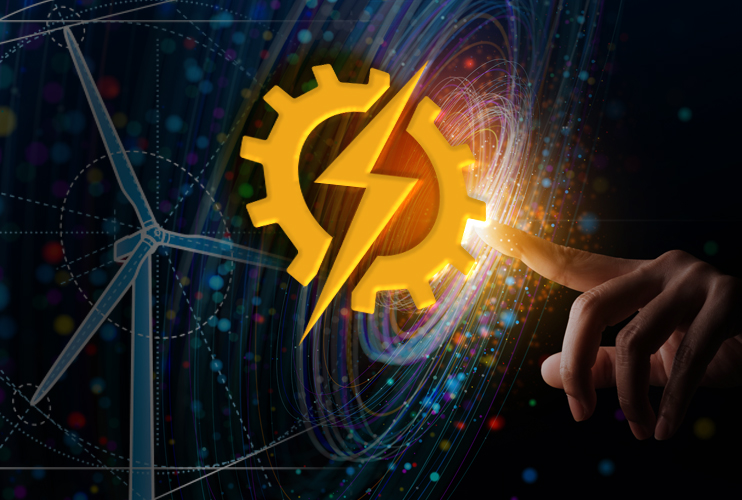A High-Value Guide for the Wind Energy Sector
Waste is a natural byproduct of industrial processes, yes, but it’s also an untapped energy resource that companies are learning to monetize.
As businesses face increasing pressure to cut carbon emissions and optimize costs, waste-to-energy (WTE) technologies are emerging as a scalable solution.
Now, advancements in thermal, chemical, and biological conversion processes are enabling everything from municipal waste to decommissioned wind turbine materials to be repurposed into electricity, heat, and biofuels. Your business can tap into this trend.
While this shift covers certain compliance requirements, to be sure, it also presents new revenue streams for industrial operations. There’s a real opportunity here. The wind energy sector, in particular, is uniquely positioned to leverage WTE innovations.
Wind turbine decommissioning is projected to generate more than 2.2 million tons of waste by 2050, including turbine blades and nacelle components. Without a sustainable disposal strategy, these materials risk becoming a long-term environmental burden.
However, with the right technologies, wind energy companies can convert end-of-life turbine components into valuable energy sources, reducing reliance on fossil fuels and improving the sector’s overall circularity.
We’ll show you how.
The State of Waste-to-Energy in 2025
Market Growth & Investment Trends
The global WTE market is projected to surpass $50 billion by 2030, driven by stricter landfill regulations, advances in material processing, and corporate commitments to sustainability. Wind energy stakeholders—from EPC contractors to utilities and investors—are beginning to recognize the role WTE can play in decarbonization efforts.
The expansion of modular WTE plants means that even remote wind farms can now incorporate waste-to-energy solutions.
The Regulatory Landscape
Governments worldwide are pushing for higher landfill diversion rates, with some countries setting mandatory waste recovery targets for industrial sectors.
In the U.S., the EPA’s Sustainable Materials Management (SMM) Program and the Infrastructure Investment and Jobs Act (IIJA) are accelerating investment in circular economy initiatives, making WTE adoption more financially viable. While the regulatory outlook for 2025 and onward is less clear, there’s reason to believe that broader market trends will keep the momentum up on this matter.
The EU’s Green Deal and China’s National Waste-to-Energy Strategy are also setting aggressive targets for industrial waste conversion, pushing manufacturers and energy producers to explore WTE as part of their compliance strategies.
Key Sectors Driving Demand
- Wind & Renewable Energy: End-of-life turbine components are a growing waste stream that can be repurposed into synthetic fuels and industrial heat sources.
- Manufacturing & Heavy Industry: Factories are increasingly integrating WTE systems to turn scrap materials into energy.
- Agriculture & Food Processing: Waste from these sectors is being used to generate biogas and biofertilizers, reducing methane emissions.
How Waste-to-Energy Works: Breaking Down the Technologies
Thermal Processes
Advanced incineration methods are an important part of this process. Modern waste-to-energy incinerators operate at ultra-high efficiency, with heat recovery systems capturing excess energy for electricity and industrial heating.
Emissions control technologies have drastically reduced pollutants, making this a viable option for non-recyclable industrial waste.
Then there’s gasification and pyrolysis. These processes break down organic and synthetic materials at high temperatures without combustion, creating syngas (a fuel gas composed of hydrogen and carbon monoxide) that can be used for power generation or as a precursor for synthetic fuels. This is particularly valuable for processing fiberglass turbine blades and composite waste.
Biological & Chemical Processes
Anaerobic digestion is another outlet. This method converts organic waste (e.g., agricultural byproducts, food waste) into biogas, which can be used for grid power, heating, or industrial applications. New microbial strains are improving conversion efficiency, making anaerobic digestion more competitive with traditional fossil fuels.
Plasma arc technology, a high-energy process, can break down hazardous waste (including toxic turbine blade coatings) into clean syngas and vitrified slag, a non-toxic byproduct used in construction materials.
The Role of AI & Automation
Smart sorting, real-time process optimization, and AI-driven waste stream analysis are improving the efficiency of WTE facilities. Advanced sensors now allow real-time composition analysis of mixed industrial waste, ensuring that materials are routed to the most appropriate conversion process.
The Business Case for WTE in Wind Energy & Industrial Sectors
Understanding the Economics of Waste-to-Energy
For wind energy developers, landfilling decommissioned turbines is rarely even an option. This makes the matter of investing in WTE infrastructure a much more urgent question: What’s the most effective and economical choice? It’s a question of long-term cost efficiency and resource optimization.
- Consider the baseline fact that landfill disposal costs range from $50 to $150 per ton, while WTE processing costs vary between $70 and $200 per ton. However, WTE offsets costs by creating energy outputs.
- Then consider broader market forces: Several U.S. states and EU nations are moving toward banning landfill disposal of wind turbine blades, making long-term WTE investment critical.
- Gasification and pyrolysis offer waste-to-fuel revenue streams, where processed turbine waste is converted into syngas, bio-oil, or industrial heat sources.
- On-site WTE reduces waste transport costs, which can exceed $10,000 per turbine when trucking blades to landfills.
- Some cement kilns and steel manufacturers now pay per-ton fees to acquire processed fiberglass waste for use as a recycled fuel source, turning disposal costs into financial offsets.
How Wind Turbine Waste is Processed for Energy
Step 1: Pre-Processing and Mechanical Breakdown
- Large blades (150+ feet) are cut into 6–12 foot segments.
- Industrial shredders reduce sections into 2–6 inch composite fragments for processing.
Step 2: Thermal Processing Pathways
- Gasification breaks down shredded fiberglass in oxygen-starved, high-heat conditions (1,300–1,800°F) to produce hydrogen-rich syngas.
- Pyrolysis thermally decomposes materials into biochar and pyrolysis oil, which can be refined into renewable diesel alternatives.
- Co-processing in cement kilns replaces coal as a heat source, utilizing shredded blades in high-temperature clinker production.
Step 3: Emissions Controls & Byproduct Utilization
- Carbon capture systems now enable CO₂ sequestration at WTE plants.
- Fly ash from gasification can be repurposed into construction-grade materials.
- Advanced VOC filtration ensures that modern WTE plants meet EPA & EU air quality standards.
Conclusion: The Time to Act is Now
The financial case for WTE is clear: lower disposal costs, energy revenue potential, and sustainability advantages.
Wind energy operators that integrate WTE into their decommissioning strategies will reduce costs, improve ESG metrics, and position themselves as industry leaders in circular energy innovation. The companies that act today will solve their waste problem and, in fact, turn it into their next major asset.


